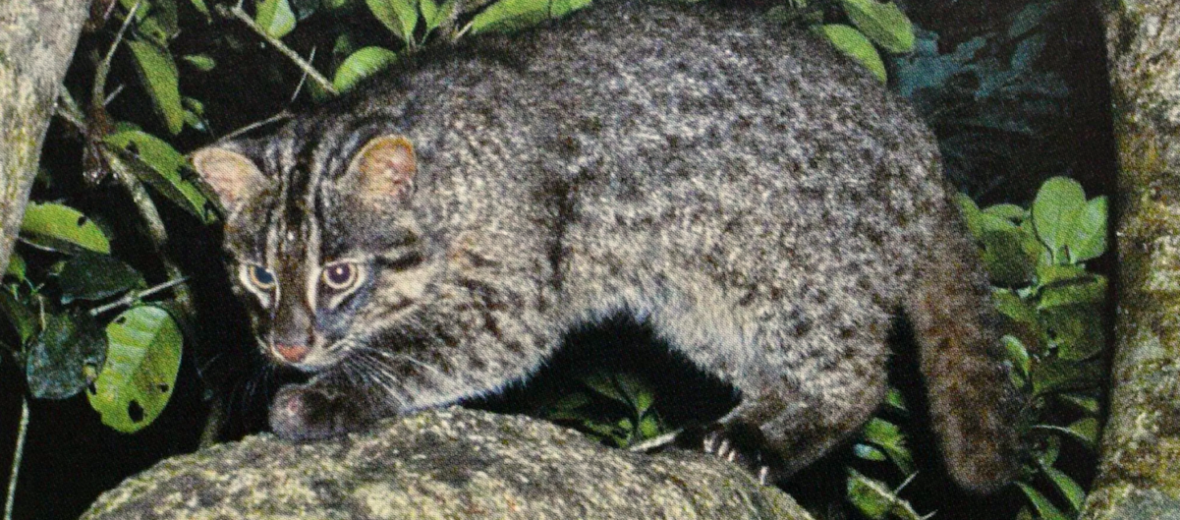
The Iriomote cat, aka Yamapikaryaa – mountain sparkling-eyed cat, Yamamayaa – mountain cat, Pingiimayaa – escaped cat, and meepisukaryaa – that which has flashing eyes, hails only from the island of Iriomote, off the coast of Japan. They prefer the mountainous, evergreen, broadleaf, subtropical rainforest environment. These felines will also venture into cultivated land. But they tend to steer clear of populated areas. These cats are listed as Critically Endangered by the IUCN. This is due to their very limited habitat, vehicle strike, rapid habitat loss, invasive species, and disease.
First the Stats…
Scientific name: Prionailurus iriomotensis
Weight: Up to 11 lbs.
Length: Up to 24 inches, plus up to a 9.4 inch tail
Lifespan: Up to 15 years
Now on to the Facts!
1.) Unlike other cats, Iriomote cats lack 1 pair of premolars, giving them only 28 teeth.
2.) Their scent glands are found around the anus, not inside it, like other felines.
3.) Iriomote cats are solitary, like most other cats. They only come together to mate.
4.) Iriomotes are crepuscular (active at dawn and dusk) and nocturnal (active at night).
5.) Although primarily terrestrial (spend their lives on the ground), these kitties can also be seen scaling trees with the best of them.
But wait, there’s more on the Iriomote cat!
6.) A group of cats is called a clowder, clutter, destruction, or pounce.
7.) They prey on mice, rats, fruit bats, frogs, snakes, lizards, birds, insects, and even fish, crabs, and if things get rough… potentially carrion (dead animals).
Did you know…?
Typically cats can sleep for 2/3 of the day. This means that, on average, a 6 year old cat has only been awake for 2 years!
8.) Females birth up to 2 kittens after up to a 60 day gestation (pregnancy).
9.) Their vocalizations are rare, but when they do sound off, they make a low, murmuring “bow-wow” sound.
10.) Like some other cats, these critters are strong swimmers.
But wait, there’s still more on the Iriomote cat!
11.) Iriomotes are 1 of just 4 cat species that are unable to retract their claws. The other cats with this trait are the flat-headed cat, the fishing cat, and the cheetah.
Did you know…?
The Iriomote cat is a subspecies of the leopard cat.
12.) Male cats are usually left-pawed. Females are typically right-pawed.
13.) Sans humans, these cats have no natural predators.
14.) They can eat up to 1.32 lbs. of food a day!
Now a Short Iriomote Cat Video!
Be sure to share & comment below! Also, check out the Critter Science YouTube channel. Videos added frequently!
Want to suggest a critter for me to write about? Let me know here.



